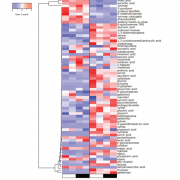
Shared expression of crassulacean acid metabolism (CAM) genes pre-dates the origin of CAM in the genus Yucca (J Exp Bot)
Crassulacean acid metabolism (CAM) is a carbon fixation pathway that reduces photorespiration and increases water use efficiency, enabling CAM plants to survive in inhospitable environments. The evolution of CAM on 35 independent occasions across angiosperms makes it a notable case study of convergent…
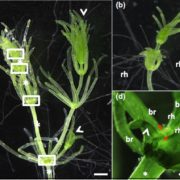
Land plants recruited an ancestral bHLH for tip-growing surface cell development ($) (New Phytol)
Land plants (embryophytes) evolved from freshwater charophycean algae over 450 million years ago. The transition from aquatic to terrestrial environments likely required the evolution and expansion of genetic programs controlling three dimensional growth and the formation of tip-growing surface cells…

Post-transcriptional regulation of FLOWERING LOCUS T modulates heat-dependent source-sink development in potato (Curr Biol)
Tuber formation (tuberization) in potatoes is controlled by both endogenous and environmental signals particularly day length and temperature. Long days and high temperature impede tuberization while it is enhanced by short days and low temperature. When conditions are favourable for tuberization, shoot-derived…

Calcium-promoted interaction between EHB1 and IRT1 inhibits iron acquisition (Plant Phys)
Iron uptake is tightly controlled so that the plant takes up not too much but not too little. Khan et al. used a yeast two-hybrid screen to search for proteins that interact with the iron transporter IRT1. They identified a protein previously shown to be involved in the hypocotyl bending response, EHB1…
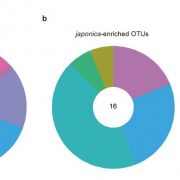
NRT1.1B is associated with root microbiota composition and nitrogen use in rice ($) (Nature Biotechnol)
Availability of nitrogen has always been a limiting factor for rice production. Different soil inhabitants and root-associated bacterial populations are involved in making nitrogen available to plants in organic as well as in inorganic forms. However, plant absorption of nitrogen is selective and affects…

Slow canopy wilting enhances drought-tolerance in soybean (J Exp Bot)
As plants are sessile organisms, they have developed highly sophisticated mechanisms to allow the modulation of development in response to environmental changes, thus maximizing their chance of survival. When soil dries, soybeans with a slow canopy wilting (SW) phenotype have delayed canopy/leaf wilting…
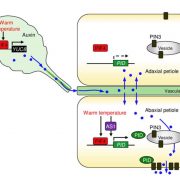
Thermal response in plants: leaf hyponasty (Plant Phys)
Non-directional stimuli can trigger directional movements in plant organs. For instance, high temperature causes the upward bending of leaf petioles, a process known as leaf hyponasty, which helps to cool the leaves. In this study Park et al. explored the link between leaf thermonasty and auxins. Gene…
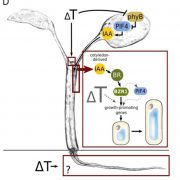
A mobile auxin signal connects temperature sensing in cotyledons with growth responses in hypocotyls (Plant Phys)
An increase in ambient temperature affects plant growth and development; for instance, high temperatures trigger elongation in petioles, hypocotyls, and roots in Arabidopsis seedlings. Bellstaedt et al. studied the spatial relationships in sensing, signaling and growth responses to high temperature in…
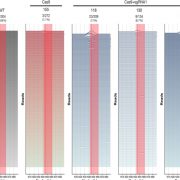
Linking CRISPR-Cas9 interference in cassava to the evolution of editing-resistant geminiviruses (Genome Biol)
CRISPR/Cas9 is a promising gene editing tool that has already been successfully used to modify many plant genes. In these applications, the gene editing machinery is transiently employed to make a stable genomic change which is then passed on to the progeny. A different application is to use CRISPR/Cas9…

